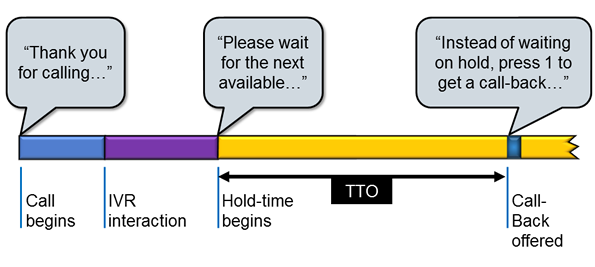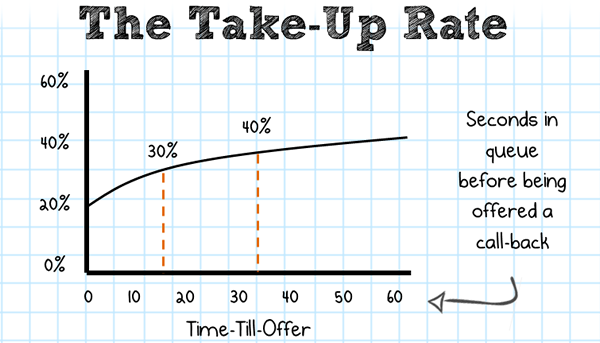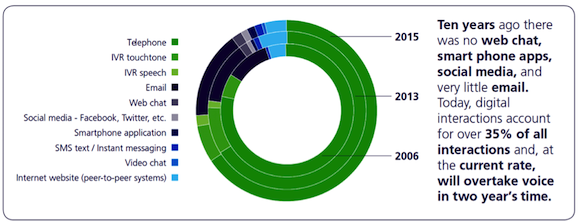 The bar for customer service has never been higher. In fact, today’s consumers are so demanding that 76% of them say just ONE unpleasant contact center experience is enough to make them take their business elsewhere. If you ask customers what can ruin the call center experience for them, “waiting on hold” is consistently at the top of the list.
The bar for customer service has never been higher. In fact, today’s consumers are so demanding that 76% of them say just ONE unpleasant contact center experience is enough to make them take their business elsewhere. If you ask customers what can ruin the call center experience for them, “waiting on hold” is consistently at the top of the list.
The truth is businesses lose customers every day due to hold time. So what are great contact centers doing? The answer is simple: They’re deploying a call-back solution. However, like any purchase, downsides may exist. If you’re exploring the idea of adding call-backs, here are some common pitfalls you can avoid.
1) Carefully Choose the Timing of the Offer Message
For callers to opt for a call-back, they have to first hear an offer message. These messages usually say something like, “Instead of waiting on hold, you can get a call-back from the next available agent by pressing 1 now.”
One of the critical variables in a call-back deployment is when to play that message to the caller. The “Time-Till-Offer” or “TTO” is the amount of time a caller spends in queue before hearing a call-back offer.

Changing the TTO will impact how many callers hear the offer. For example, if the average hold time is 2 minutes, but the offer isn’t played until 3 minutes in the queue, most callers won’t hear it.
TTO also impacts the Take-Up Rate, which is the fraction of callers who opt-in after hearing the message. There’s interesting psychology at play here: Some callers will take an offer that is made immediately, while others will opt to “wait it out”. But after a few minutes on hold, callers are more likely to opt-in, so the Take-Up Rate grows. After a while, this effect flattens out. The chart below is an example of this relationship (but may differ in your environment).

Here is a short video of a Fonolo customer talking about his experience in adjusting the TTO:
[fonolo_overlay_video src=”105148079″ title=” When to Offer the Call-Back” time=”0:40″]
Take-Up also increases by making multiple offers for the call-back. In fact, this is the best way to maximize the overall call-back rate. (If you’re assessing vendors for a call-back solution, make sure the ability to make multiple offers once a caller is in queue is on the feature list.) To keep calculation simple, we will assume here that just a single offer is made.
Although this sounds complicated, it’s actually good news. Changing TTO is an easy “lever” to adjust and has a big impact on the performance of your call-back deployment.
If you want to go deeper into this exercise, download our eBook, “The ROI of Call-Backs for Your Call Center” or better yet sign up for next week’s webinar on the same topic.
2) Don’t Make Customers Wait a Second Time
Call-backs can be “agent-wait” or “customer-wait”. In the agent-wait scenario, the agent is already on the line when the customer answers the call. This is a better experience for the customer, but the agent has to wait while the customers phone rings. Luckily, the idle time is typically 10 seconds or less.
In the customer-wait scenario, the call-back system tries to estimate when the next agent is going to be ready and calls the customer a few minutes ahead of that time. This maximizes agent efficiency, but it results in a negative experience for the customer. From their perspective, they requested a call-back only to be placed on hold again. If the system incorrectly determines agent availability, then hold time can be long, resulting in a frustrated customer and negating the advantage of having call-backs in the first place!
Make sure you’re clear about which approach you’re getting.
3) Have a Multi-Channel Strategy
Voice, email, Twitter, Facebook, web chat… at this point, a vast majority of contact centers (88% according to one study) are using multiple channels to interact with their customers. To add some perspective, look at the chart below, from Dimension Data’s highly regarded Global Contact Centre Benchmarking Report. It shows the dramatic change in channel usage over the course of several years, based on a survey of 900 call center managers.

Each channel has its strengths, but the voice channel has a place of distinction. We know, at an instinctive level, why a live agent conversation stands apart: When you have a tough issue to discuss; when there is an urgent matter, when the other options have left you frustrated, we want to talk to another human to cut through it all.
Many companies invest heavily in their self-service channels, but then give little thought to what happens when customers reach a dead-end and need to talk to an agent. This is one reason call-backs are such an important tool to add to your toolbox: they allow your callers to escalate smoothly to a voice conversation from any other channel.
To make the most of this ability, your call-back solution needs to have strong multi-channel capabilities, like pre-built components that can be added quickly to your web page or mobile app. Read more using multi-channel call-backs here.

4) Maintain Call-Attached Data
Customers really dislike repeating information they’ve already given out. When consumers are asked what part of the call center experience frustrates them, that complaint always tops the charts. (See this study by Accenture, for example.)
Even without call-backs, this is sadly still a common occurrence in contact centers. It’s sometimes due to a lack of interoperability between proprietary call center infrastructure, and sometimes the result of outsourcing calls to a third-party call center.
Any context that was established with the caller prior to requesting a call-back should be preserved while the caller is in the virtual queue, and then brought back when the call-back occurs.
5) Explore all Your Options
As you can see, there are many aspects to consider when selecting a call-back system. It’s important to have a vendor you can trust to make sure all the angles are covered. Obviously, we think our own call-back product is an excellent choice, but we always encourage customers to explore their options thoroughly.
A logical starting place is whether your existing call center platform has a native call-back option. Many platforms, both on-premise and cloud-based, have at least some form of call-back functionality. Although it’s convenient having call-backs built-in to your existing platform, there are several potential downsides to consider:
- If you change platforms in the future, you will have to start over. (As a bonus: having call-backs in place from a 3rd party during a platform transition is great way to mitigate any hiccups that might occur.)
- If you have a multi-site or multi-platform scenario, you will need to configure each call-back solution separately.
- If you send some of your calls to a BPO/outsourced call center, the call-back strategy won’t extend to those calls.
Whether you get a built-in or 3rd party solution, here are some questions you should ask before making a selection:
1. What’s the pricing model? Equipment-based solutions will require up-front capital expenditures, while cloud-based solutions (like Fonolo) will go on the operating budget instead. Your accounting department may have strong preferences on this front.
2. How does prices scale as call volume goes up or down? SaaS solutions (like Fonolo) allow good flexibility in this regard. If you purchased an equipment-based solution based on usage projections, and then find that those projections are off, it may be difficult to adjust.
3. How easy is it to adjust parameters like the timing of the offer message, the wording of the message, the fail-over options, etc? Is there an easy-to-use interface so that these adjustments can be made without involving IT resources or calling in a consultant?
4. What happens when your call volume spikes and there are already more calls queued up than can be handled before end-of-day? Handling these kinds of sticky situations is really critical.
5. How hard is it to add web & mobile functionality? If the vendor is simply offering an API to build on, that’s a project that may never happen.
6. How thorough is the reporting and can it be integrated with your existing reporting tools
Call-backs are one of the few call center technologies that are truly win-win: Callers have a more pleasant experience and the call center gets a more efficient operation. We hope this short guide is a helpful starting point for you. If you’re exploring this option today, we are happy to help any time.

Discover the Contact Center Trends That Matter in 2024
Dig into industry trends and discover the changes that matter to your business in the year ahead.